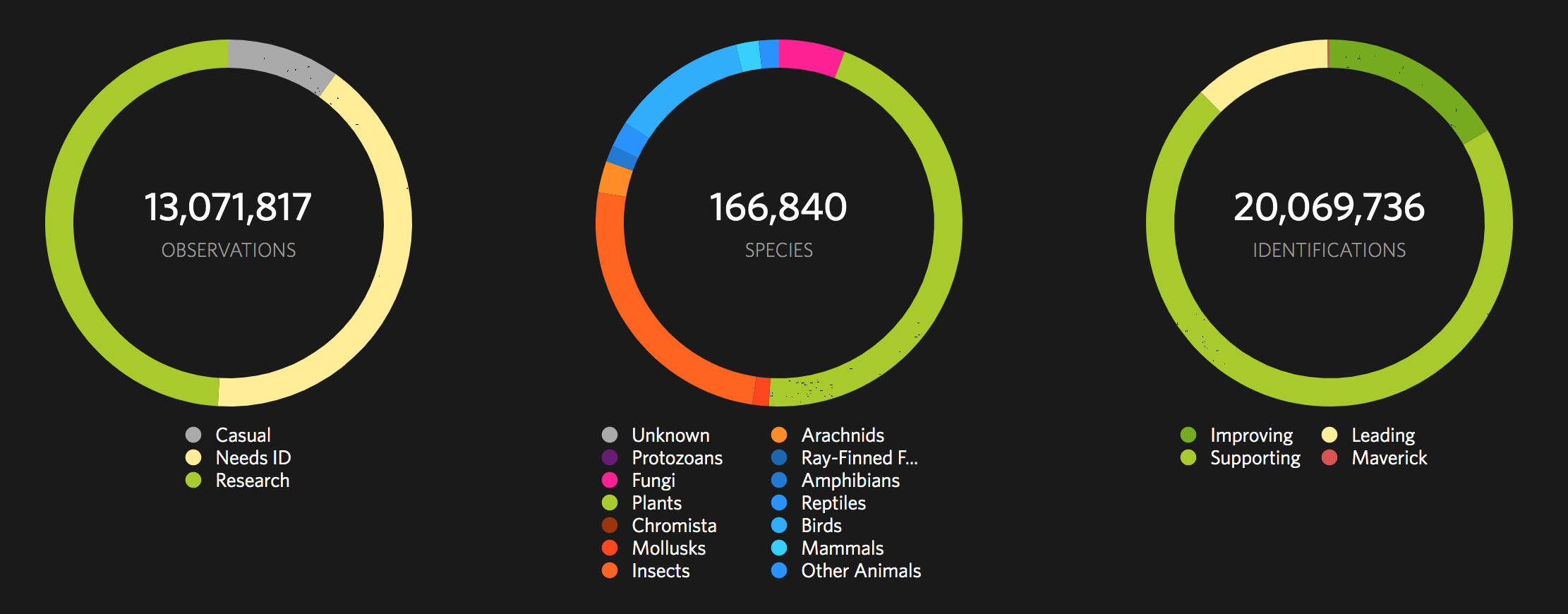
Another year, another Year In Review! 2019 was another record-breaking year for iNaturalist, as you can see in the site-wide growth stats, with continued exponential growth in observations and users:
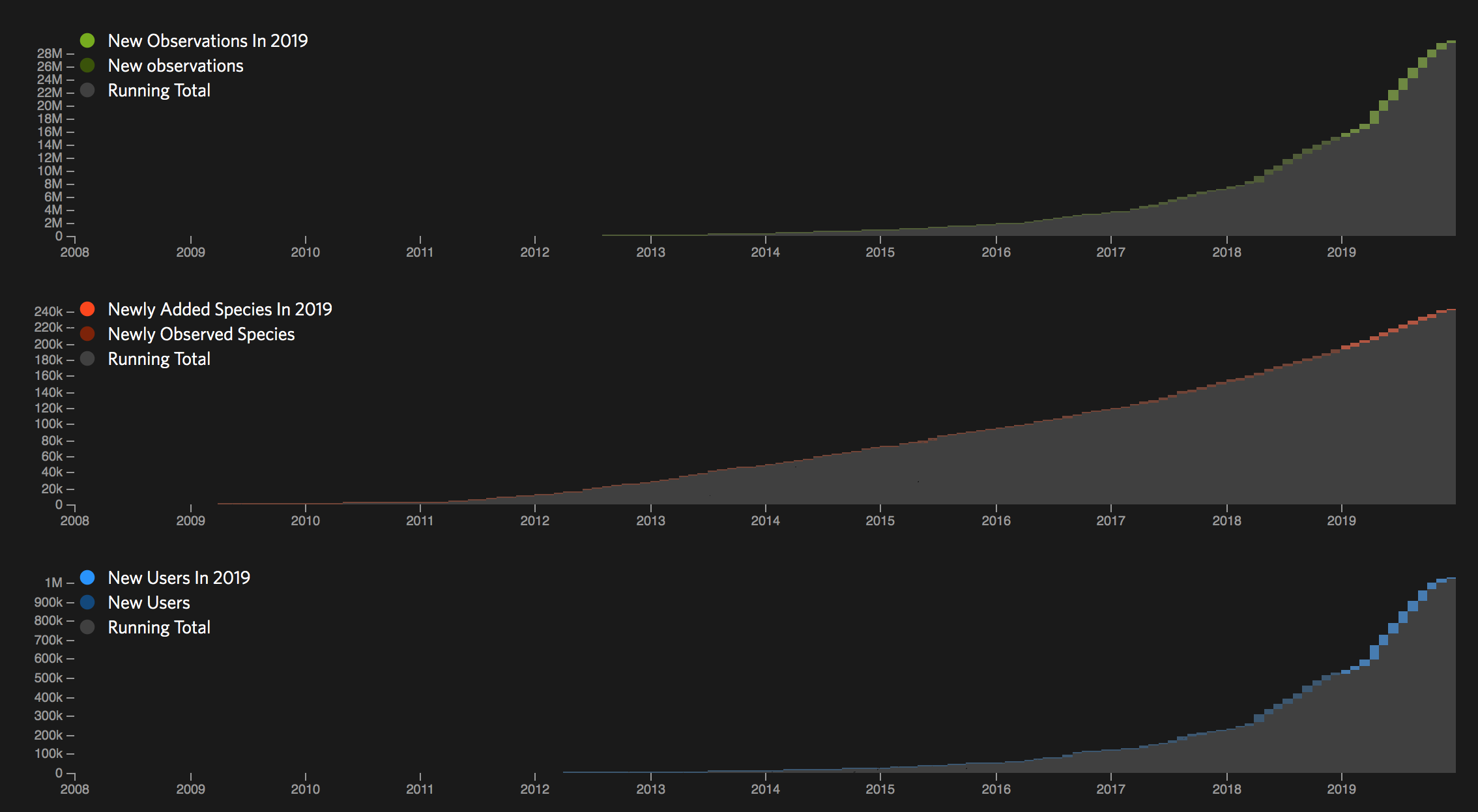
Once again, we have City Nature Challenge to thank for a lot of that growth, which was a real doozie this year, bringing in 920k+ observations by almost 40k people of 32k+ species! No doubt it will top a million next year. CNC organizers, give yourself a pat on the back (there are hundreds of you at the city level, but @kestrel, @rebeccafay, and @lhiggins paved the way and lead the international coordination). We're also continuing to see strong growth from countries in the iNaturalist Network, particularly Mexico and Canada, but also members who joined this year like Argentina, Ecuador, and Australia. However, I'm always most intrigued by growth in areas where we have no direct collaborators, and I think Russia takes the prize in that category this year, where we had a huge surge in participants and observations. We suspect this is at least partly due to the recruitment efforts of the Flora of Russia project and its organizers at Moscow University Herbarium (mostly @apseregin), but I feel like we also need to thank @katya for translating an extraordinary proportion of the site, the apps, and Seek into Russian.
That's a good segue into translation! We added a table of translators to the Year In Review this year, largely because I dedicated a lot of time this Fall to making the site more translatable and replying to questions and comments from translators. Of which there are quite a few! Special shoutout to @wouterkoch for pretty much single-handedly translating the entire site into Norwegian Bokmål (and for answering some questions I had about what languages people speak in Norway). What you can't see in that table is how fast some folks are at translating! Usually when we post new text, it gets translated into Russian (@katya), Italian (@danieleseglie), Turkish (@sakatur & menver), Danish (NCAA & Lekkim), and more, usually within 24 hours. Almost all of these folks are volunteers, so our heartfelt thanks to all of you for making iNat better for people all around the world.
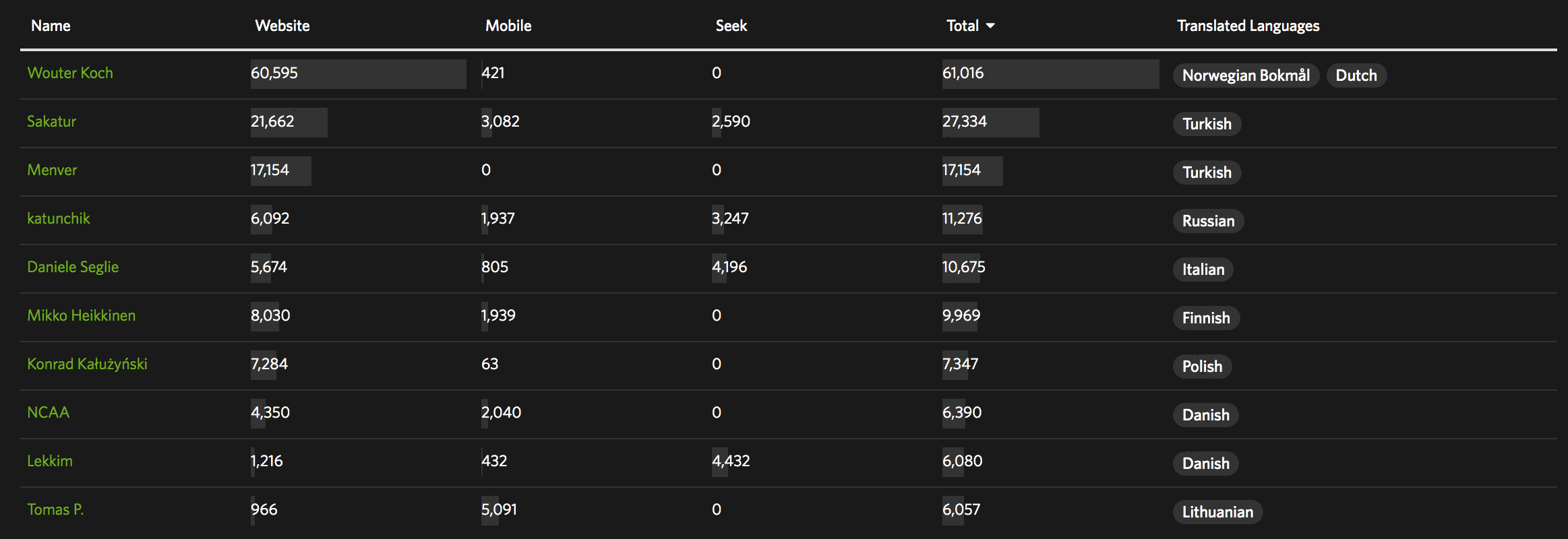
Another addition to the Year In Review this year is streaks! Some of you may remember I wrote a blog post about this WAY back. Well, surprise surprise, @jmaughn is still having an incredible run, but @sambiology is right behind him:
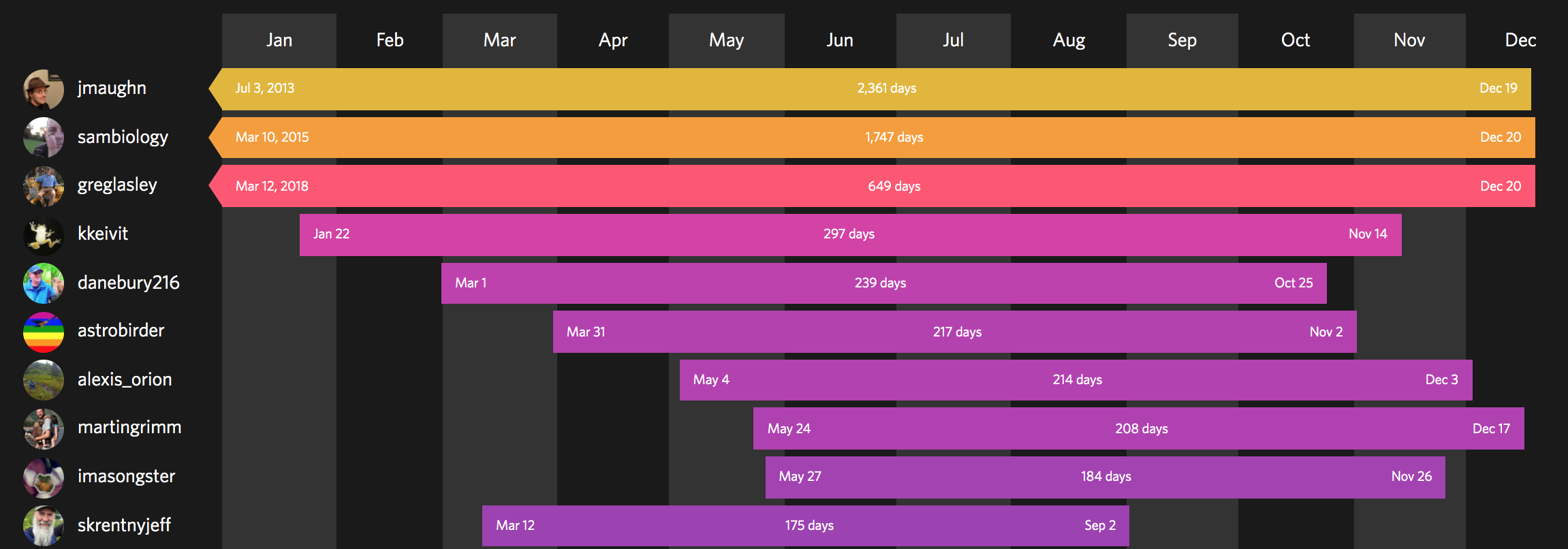
I was going to add this chart to the individual stats pages, but honestly it wasn't that interesting because most people don't go on streaks of more than a few days (@atlnature made this neat thing if you're curious about your own streaks). Jim and Sam have both added an observation a day for more than 1,700 days. That's over four and a half years. Might I also add that they are both exceedingly knowledgable naturalists and a pleasure to hang out with in the field?
Also, can we hear it for Seek? We hired @abhasm and @albullington last year to completely redesign and rebuild Seek from the ground up, and @alexshepard, @budowski, @pleary, and @gvanhorn did a ton of work to shrink our computer vision model down so it could fit on a phone and work offline. Seek currently has 514k installations on iOS and 379k on Android, and we hear great stories about it almost daily, often from people who have never heard of iNat or would never use it, so we really think we're helping a different demographic get outside. I just want to point out how proud I am of Amanda and Abhas, both of whom are working on app development for the first time since transitioning out of other careers, and yet did a phenomenal job on this app with practically zero oversight. Amazing work.
Other updates from the team: @carrieseltzer scaled the walls of accounting and marketing to bring you the iNat Store so we can all finally have the iNat t-shirts we so richly deserve, and the Monthly Supporters program, which is a small but growing part of the income that pays our bills. @tiwane ran herd on the Forum, mediated many disputes, and bounced around the world spreading the love of iNat far and wide. @alexshepard juggled computer vision training with iPhone app development with aplomb, and @budowski tolerated my incessant issue-filing on Android. @pleary (in addition to computer vision stuff) superheroically kept our servers running despite all that exponential growth, insane events like CNC, and a nearly constant onslaught of bots and scrapers downloading iNat photos en masse (downloads that we have to pay for, even though there's not too much we can do to prevent it). Since Patrick hasn't been free to do much user-facing feature development this year, here's a good chart depicting what he has been doing:
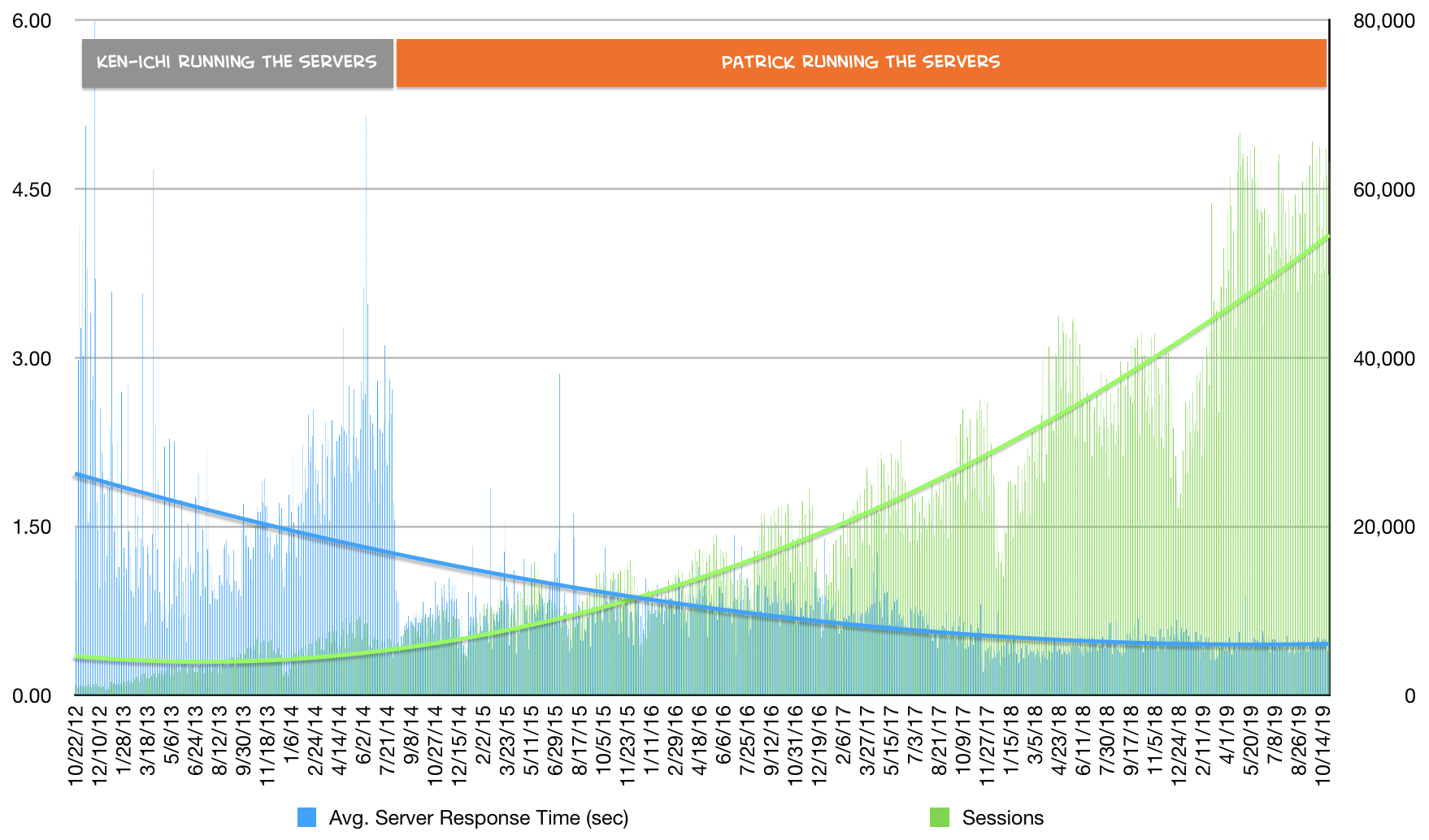
Conclusion: we should all be greateful Ken-ichi isn't running the servers. @loarie hustled hard to secure the rest of our funding while tackling taxonomic monsters for "fun," and I... complained a lot. And broke some stuff. And maybe fixed some stuff.
Finally, a huge and hearty THANK YOU to you and everyone in the iNat community from everyone on staff. As I try to emphasize in every talk I give and every conversation I have about iNat, none of it works with people getting outside and recording observations, and folks inside (or on the train, or waiting in line, or when they're supposed to be working) adding identifications. iNat is and has always been a group of people who love nature and helping each other learn about it, and everything else, the data, the maps, the charts, the machine learning models, the scientific papers, and the enormous privilege we on staff have to work on this stuff full-time, derives from that communal effort and that fundamental sense of wonder about all the other creatures with whom we share this world. So again, thank you. Here's to another year of exploration in 2020, and yea, another decade of the same.
P.S. Protip: you can play with the data behind any of these Year In Review pages by appending .json to the URL, e.g. https://www.inaturalist.org/stats/2019.json


















